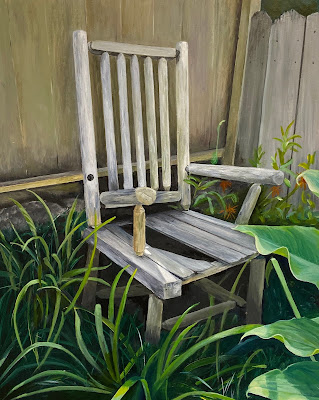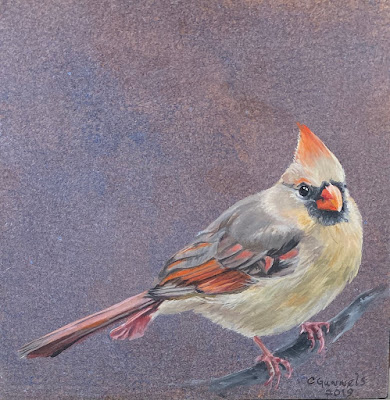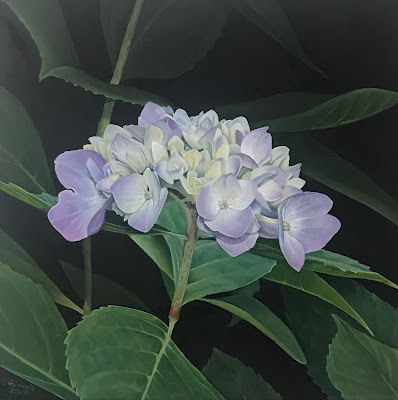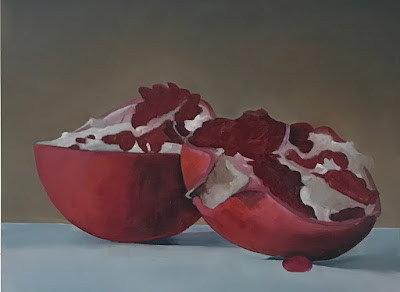Goldfinch with Thistle, Oil on Board, 10"x8"

As part of the series that places the bird with its food source, I placed this American Goldfinch with a thistle. Initially, the composition as seen on the left had a single thistle hanging as to be dried. My in-house critic found this unintelligible. Questions arose: does the space need to be identifiable?, should the depth of the space be clear?, is this surrealism? realism? My decision was to add more thistle. The image on the right shows the beginnings of this approach.
Thistle is the common name of a group of flowering plants with sharp prickles all over the plant. The prickles are an adaptation that protects the plants from herbivores. The varieties are vast, some considered beneficial for pollinators. The thistle is the national emblem of Scotland, land of my maternal heritage. According to a legend, an invading Norse Army was attempting to sneak up at night upon a Scottish army's encampment. During the attempt one barefoot N0rseman stepped upon a thistle, cried out in pain, thus alerting the Scots. The spear thistle, presented here with the Goldfinch, is considered the likely thistle the Norseman stepped on.






































